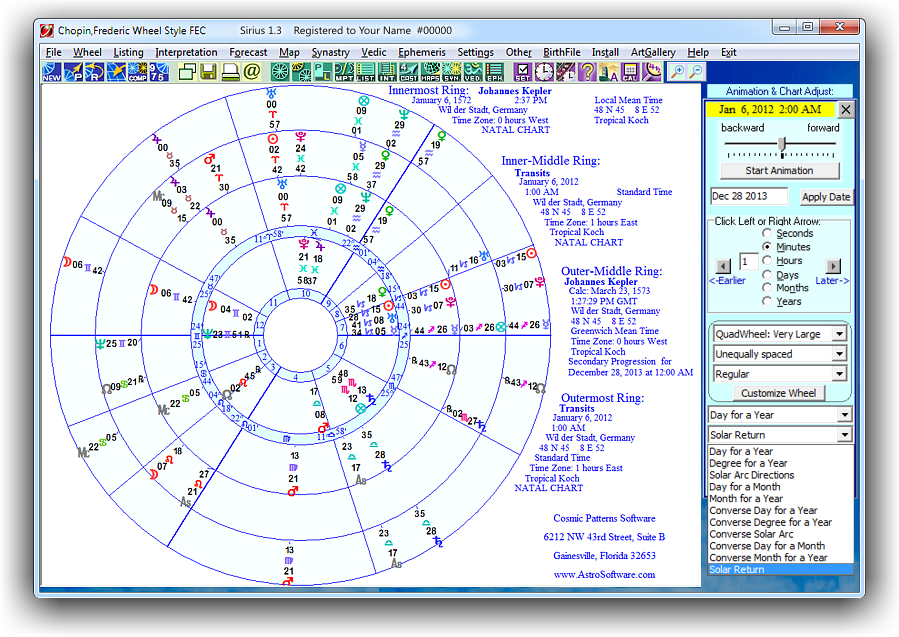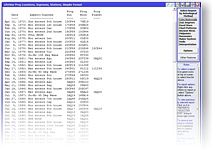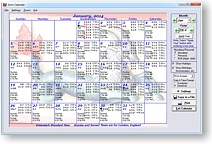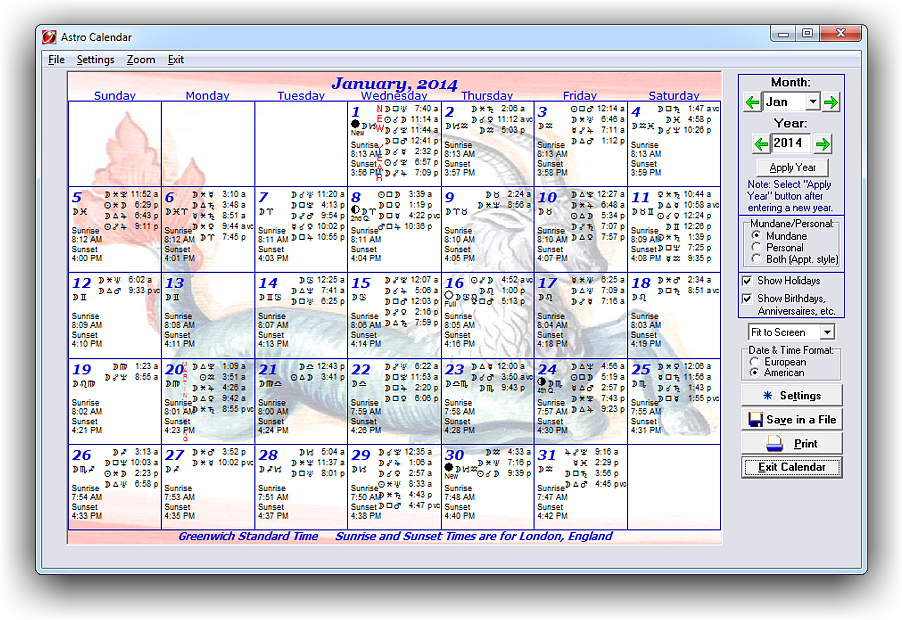 Windows 10 / 11 compatible!
Windows 10 / 11 compatible!
|
Forecasting is a big part of astrology. There are many different astrological techniques, such as progressions, transits, and solar and lunar returns. There are also techniques like diurnal charts, eclipses and lunations, phase angle returns, solar arc directions, primary directions, Hellenistic time lords, and Vedic dasas. There are also many different ways that astrologers view forecasting trends. Some astrologers view a BiWheel, TriWheel, or QuadWheel, and move it forward and backward in time, others produce listings of when transit-to-natal or progressed-to-natal aspects occur, and some use the graphic ephemeris. There are also very exciting new ways to visualize transits that are made possible by the power of computer technology and that were not feasible to do by hand, such as the AstroSignature and Electional Astrology Graphs. Sirius provides an extraordinary range of calculations and different ways of presenting forecast information. Most people use only a few of the features available in Sirius. In a similar but more extreme way, we access only a tiny fraction of the websites available on the Internet. Even though you are likely to use only a small number of the features in Sirius, they are available in case you ever would like to explore other areas of astrology. Also, keep in mind that the features in Sirius for various specialized areas of astrology often surpass the features in astrology software available from other sources that specializes in one or two areas of astrology. Just because Sirius is more comprehensive than other programs dos not mean that it is shallow in any areas of astrology.
“4-Hour” Forecast New in Version 4.0
There are 13 new “4-Hour” forecast AstroSignatures. They are called the “4-Hour” forecasts because we recommend that you set the frequency of calculations to 4 hours for these forecasts. The frequency of calculations is a setting for all AstroSignature forecasts. These new AstroSignature forecasts analyze aspects that may be within orb for less than half a day so fluctuations throughout the day are detected. The feature to show times adjusted to any location enables you to see how these changes occur throughout the day for the clock time at any location.
Graphic Forecasts
Graphs and visual presentations of information often provide an easier way to see what is happening than lists of words. There are several graphic forecasts in Sirius, such as:
Interactive and Multi-Ring Wheels with Progressions and Returns
Many astrologers look at TriWheels with the natal chart in the center, a progressed chart in a second ring, and transits in the third ring. BiWheels (2 rings) and QuadWheels (4 rings) are also popular. Some astrology programs also allow you to move the charts interactively over time. Sirius has developed these features to a new level. While you are interactively moving a BiWheel, TriWheel, or QuadWheel forward and backward in time, you can also change the wheel style to a larger wheel or a smaller one with an aspect grid or to 2 separate wheels rather than a BiWheel, and change the kind of progression. In the QuadWheel, you can choose a solar return, progressed chart, or solar arc direction, etc. and you do all this while in the interactive mode where you can move the chart forward and backward. The attention to detail and the way that we strive to meet the needs of virtually any astrologer makes Sirius a program that you do not grow out of but instead you explore and learn new ways to analyze charts. Learn More >
Text Listings
Even astrologers who prefer the Time Line Format for transit-to-natal, progressed-to-natal, progressed-to-progressed, and transit-to-progressed aspects may use the listings of the progressed lunation cycle and other major progressed events, planetary hours, dates of planet stations, etc. There are many different formats and different kinds of astrological information that can be included in text listings. Learn More >
Other Forecasting Features
Some of the other forecasting features in Sirius are difficult to classify in one of the categories listed above because they may include graphics or text but also have combinations of features or unique qualities that do not fit precisely into these categories. These features are:
|








